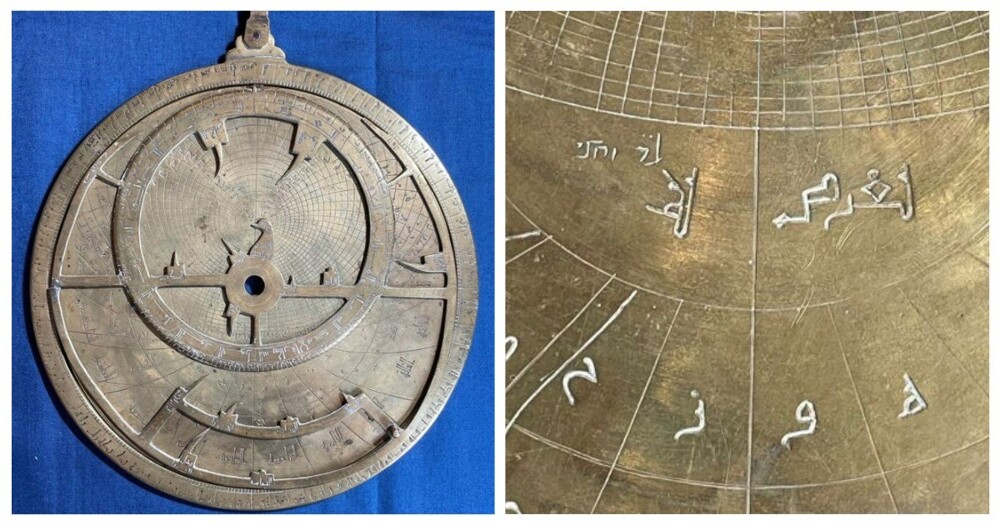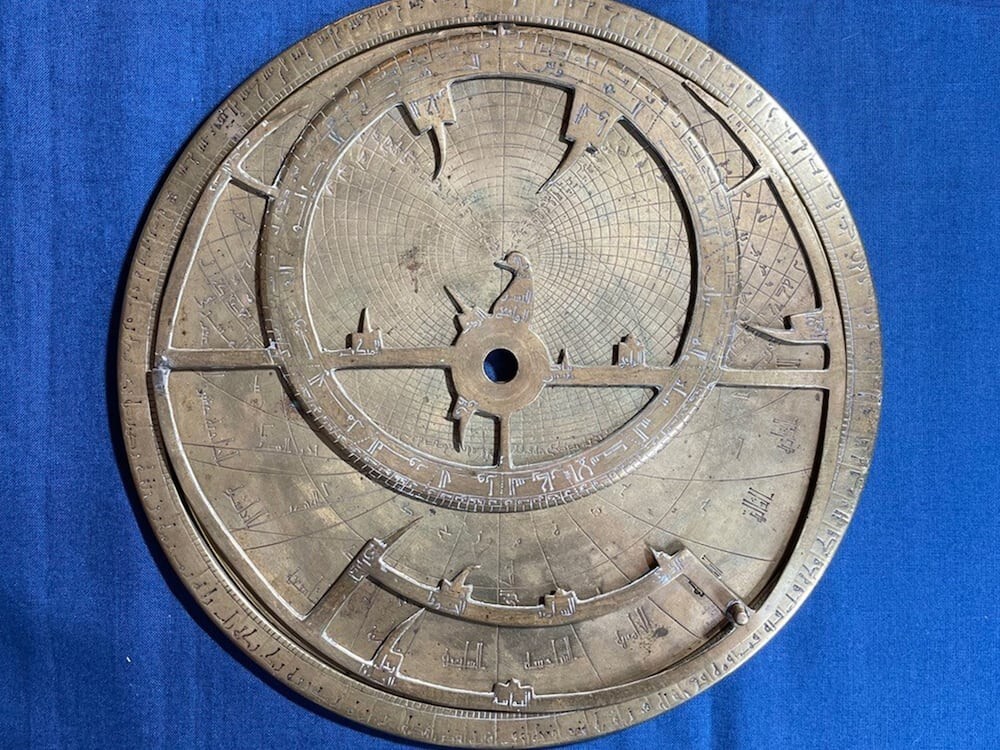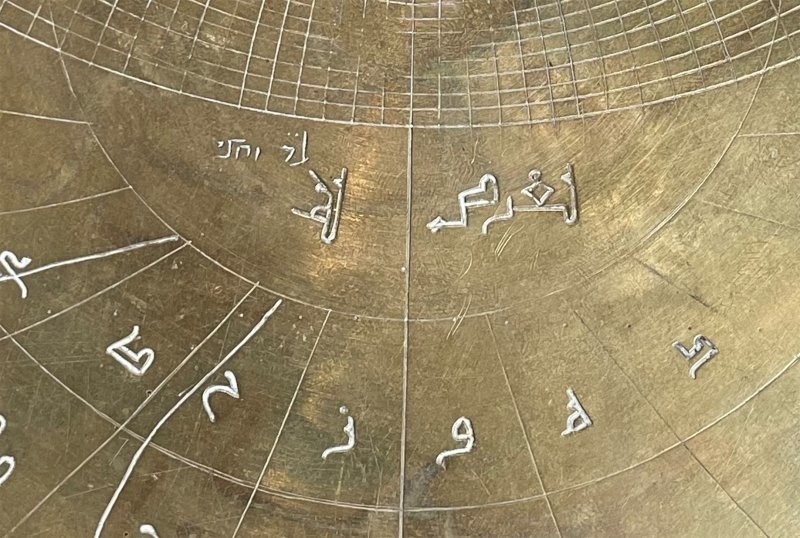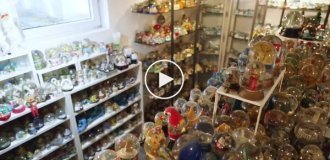Extremely rare astronomical instrument with inscriptions in several languages (5 photos + 1 video)
A medieval astronomical instrument discovered completely by accident has turned out to be evidence of cross-cultural scientific collaboration. The brass astrolabe dates back to the 11th century and was made in Spain, but was subsequently engraved with explanations in different languages as new owners adapted it to suit their needs. 
The device is a unique artifact: a palimpsest that records the changing ideas and needs of its owners as the world changes.
"This is not just an extremely rare specimen. It is powerful evidence of scientific exchange between Arabs, Jews and Christians over hundreds of years," says historian Federica Gigante of the University of Cambridge, who made the surprising discovery at the Verona museum. 
The Verona astrolabe underwent many changes as it passed from hand to hand. At least three users added translations and corrections: two in Hebrew and one in Indo-European. 
An astrolabe is a map of the sky with rotating parts that allow a person to calculate their position in time and space - a useful tool not only for navigation, but also for astronomy and astrology.
Gigante studied a copy from the collection of the noble collector Ludovico Moscardo, who lived in Verona in the 17th century. 
“The museum didn’t know what it was and mistook the item for a fake. Now it is the most important item in their collection,” says the historian.
“When I arrived at the museum and began to study the astrolabe, I noticed that it was not only covered with beautifully engraved Arabic inscriptions, but also faint words in Hebrew. I could only make them out in bright light. I thought I was dreaming, but I kept finding more and more records."
The style of the instrument and the engraving on the back are consistent with other examples made in Al-Andalus (Islamic Spain) in the 11th century.
As for the engravings, they demonstrate a rich cultural history. Some of the Arabic inscriptions represent prayers.
Another Arabic inscription reads: “for Ishaq” and “the work of Yunus.” In medieval Spain there was a large Arabic-speaking Sephardi Jewish community. These records may mean that the astrolabe spent some time there too. 
The names of astrological constellations are written in Hebrew.
“These additions and Hebrew translations suggest that at some point the object left Spain or North Africa and ended up with the Jewish diaspora in Italy,” the expert explains.
Later, Arabic numerals appeared on both sides of the astrolabe, probably for use by native Italian speakers. Interestingly, some of these amendments are wrong.






























